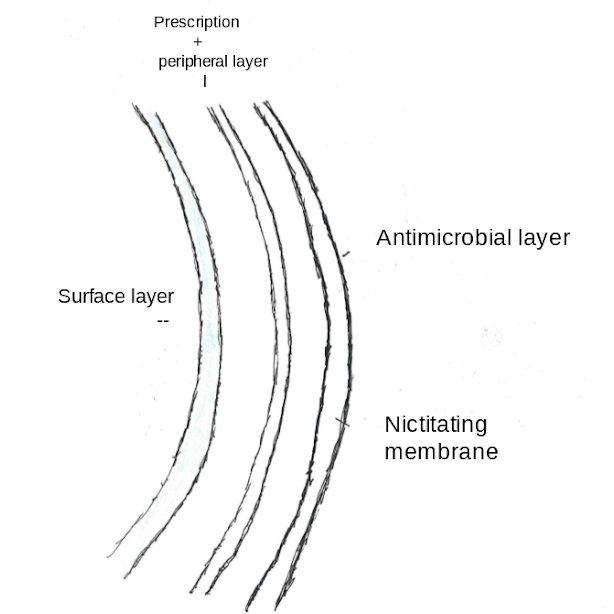The Red-Tailed Hawk mostly inhabits Woodland places with tall trees. They have crazy good eyesight, sharp talons, and muscular legs. Their eyes are fixed so they can see the ground while flying high, strong legs to pick up small mammals like squirrels, and sharp talons to rip and tear. (Doom reference)
Below is a diagram of the contact and its approximate size.

Eye Drawing, (2021), NO
The contact design will be a three-layer contact, that covers a majority of your exposed eye.
SDG's, or Sustainable Development Goals, are certain objectives set by the UN to break down the process of saving humanity one step at a time. There are 17 goals so far, and each one has sub-sections to it. My product fits under SDG #12 (responsible consumption and production). One of the milestones in SDG #12 is #12.5, which states "By 2030, substantially reduce waste generation through prevention, reduction, recycling, and reuse."
So how does my project incorporate sustainability? By using the resources we have, rather than introducing toxic inorganic materials into the environment. Instead of monthly waste of contacts, yearly replacement lenses will be applied and the old ones will be recycled and reused once repaired and sanitized. Less waste output=less toxic material introduction, as well as more resource development and utilizing closed-loop economies. The lenses can be reused if not badly damaged. Minor repairs can be made on them however large scars or breaks may result in the separation of the layers and recycling the materials to their base form. Also, they’re already more sustainable than regular contacts since they need to be replaced yearly. This will help both the consumer and producer.
Essentially, biomimicry will open doors for us, and we can learn from nature to solve some of humanity's challenges. This is a universally applicable concept, anyone anywhere in the world can use biomimicry to change the course of human evolution. We have to act now because climate change is putting us on a deadline. We need to make more closed-loop systems and get rid of non-reusable waste, but first, we need ideas. How can you help? Innovate. Solve. Act. Participate in the change we need.
insightvc. (2016, July 8). Human Vision VS Eagle Vision [web log]. Retrieved December 15, 2021, from https://www.insightvisioncenter.com/human-vision-vs-eagle-vision/.
source 2
Musgrave, C. S. A., & Fang, F. (2019, January 14). Contact lens materials: A materials science perspective. Materials (Basel, Switzerland). Retrieved December 15, 2021, from https://www.ncbi.nlm.nih.gov/pmc/articles/PMC6356913/#:~:text=Contact%20lens%20materials%20are%20typically,contact%20lens%20(CL)%20users.
source 3Maizlish, A. (2018, December 24). Red-tailed hawk - the face of a Killer. Flickr. Retrieved December 15, 2021, from https://www.flickr.com/photos/amaizlish/45527679855


